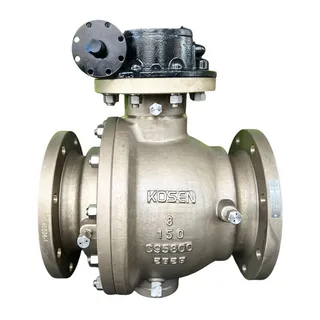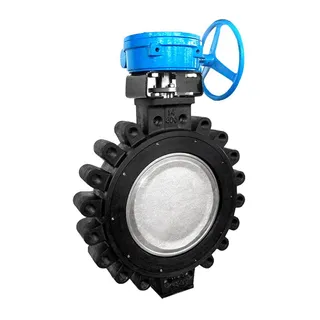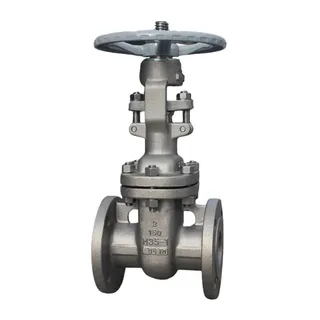In industrial production, pneumatic diaphragm valves, as an important control component, are widely used in the transportation and control of various fluid media. However, proper installation is the key to ensuring normal operation and extending the service life of pneumatic diaphragm valves. This article will provide a detailed introduction to the preparation work before installation, the techniques and key points during installation, and the prohibitions to avoid, helping you complete the installation smoothly and ensure efficient valve operation.
Before installing a pneumatic diaphragm valve, sufficient preparation work is indispensable. This not only ensures a smooth installation process but also avoids potential problems caused by negligence.
First, carefully check whether the valve and pipeline sizes match. The connection diameter between the valve and the pipeline must be consistent; otherwise, it may lead to an unstable connection or even failure to connect. At the same time, check whether the valve and pipeline materials are compatible. Different materials may undergo chemical reactions when in contact, causing corrosion or leakage. For example, certain metal pipelines may react with specific chemical media, while suitable plastic or rubber materials can effectively avoid these issues. Therefore, confirming material compatibility before installation is crucial.
The cleanliness of the installation site is equally important. During installation, any debris may enter the valve, causing damage or affecting normal operation. For example, welding slag, rust, or dust may get stuck in the diaphragm or sealing parts of the valve, affecting its sealing performance. Therefore, before installation, ensure that the site is clean and tidy, preventing debris from entering the valve.
When installing a pneumatic diaphragm valve, correct installation methods and techniques can ensure the valve's performance and service life. The following are key steps to pay attention to during installation.
Place the pneumatic diaphragm valve at the predetermined installation location. Select a suitable flange or threaded connection method according to the pipeline connection diameter. Before connecting the valve to the pipeline, apply sealant or sealing tape at the connection to ensure tightness. Use a wrench or socket to appropriately tighten bolts or nuts, but avoid over-tightening to prevent valve damage or leakage.
The pneumatic diaphragm valve requires connection to an air supply. Before connecting, check whether the air supply pipeline pressure and flow meet the valve requirements. Use appropriate fittings or quick connectors to ensure secure connections and tighten properly. At the same time, connect the control signal interface of the pneumatic diaphragm valve to the control device (such as PLC or control valve). Depending on the type of control signal, select the appropriate connection method, such as cable or wire connection, and check whether the control signal voltage and current meet the valve's requirements before connection.
After completing the valve installation, commissioning and testing are required to ensure normal operation. First, check whether the valve operates flexibly without sticking. Then, send signals through the control device and observe whether the valve's opening and closing states match the signals. Finally, use tools such as pressure gauges or flow meters to check the valve's pressure or flow regulation performance, ensuring it meets requirements.
When installing a pneumatic diaphragm valve, the following points should also be noted to ensure correct installation and normal operation.
Pay attention to the inlet and outlet directions of the valve to ensure correct flow. Generally, valves are marked with arrows indicating inlet and outlet, which should be followed during installation. At the same time, ensure that the valve's operating lever or handle is convenient to operate and does not collide with other equipment or pipelines. Additionally, select an installation location that is convenient for operation and maintenance, with enough surrounding space, and avoid installing in areas with strong vibration, high temperature, or high humidity. For outdoor installation, protective measures such as shelters should be added to prevent the valve from being damaged by wind, rain, or direct sunlight, which may cause component aging.
Ensure that the pipeline diameter matches the valve diameter during connection, and that flange bolts are tightened evenly to avoid skewing and poor sealing. Also, ensure the pipeline interior is clean, free of welding slag, rust, or debris, to prevent damage to the diaphragm or interference with normal operation. Strictly follow the valve's marked flow direction; reverse installation is not allowed. Generally, the flow of a pneumatic diaphragm valve enters from above the diaphragm and exits below. Incorrect flow direction may affect sealing performance and operating force.
Before installing a pneumatic diaphragm valve, understand its maintenance requirements and maintain it accordingly. Regularly check sealing performance, operation, and corrosion resistance; clean and replace damaged components in time. Periodically check thermal insulation measures, such as the condition of insulation covers and whether insulation materials have fallen off. Inspect diaphragm and sealing component aging and replace them in advance according to actual operation. Monitor valve operating temperature to avoid exceeding its tolerance.
During installation of pneumatic diaphragm valves, the following prohibitions must be observed to ensure safe operation.
Pneumatic diaphragm valves are suitable for general industrial media and not suitable for high-temperature or high-pressure environments. They are mainly composed of metal and rubber materials, which may be damaged when used in corrosive media. Therefore, when selecting a valve, choose the appropriate material and model according to actual conditions. Additionally, pneumatic diaphragm valves require air supply connection. Installing them in flammable or explosive locations may cause fire or explosion; such installations should be avoided.
Pneumatic diaphragm valves need to maintain stable operation. Installing in environments with strong vibration may cause faults. Use dry, clean compressed air during installation to avoid water or debris damage. Follow design requirements for proper pipeline connection; do not change the connection method arbitrarily, as it may affect normal operation. Adjust and use the valve according to its rated pressure; exceeding the rated pressure may cause valve rupture or damage.
Valve sealing performance is crucial to operation. Choose sealing materials suitable for the medium to ensure reliability. Different media require different sealing materials—for example, acidic media may need corrosion-resistant seals, while high-temperature media require heat-resistant seals. Select proper materials according to the actual medium during installation.
When installing pneumatic diaphragm valves in different operating environments, certain points must be emphasized to ensure normal operation under specific conditions.
In high-temperature environments, such as high-temperature pipelines in refining and chemical processes, pay special attention to thermal expansion during installation. Allow sufficient space for expansion to avoid excessive stress due to pipeline and valve thermal expansion. Expansion joints or flexible connection pipes can be used to absorb thermal expansion. At the same time, select diaphragms and sealing components made of high-temperature resistant materials, such as PTFE, to ensure good sealing at high temperatures. For pneumatic actuators, implement thermal insulation measures, such as installing insulation covers, to prevent high temperatures from affecting normal operation.
In low-temperature environments, such as freezing or cold storage industries, valves may face freezing risks. Provide good insulation using insulation cotton, polyurethane foam, or other materials. For areas prone to water accumulation, install drainage holes to prevent ice formation and valve damage. Select materials with good cold resistance, such as special rubber diaphragms, ensuring flexibility and sealing performance at low temperatures. Replace actuator lubricants with low-temperature grease to ensure smooth operation in cold conditions.
In corrosive environments, such as chemical and electroplating industries, corrosion resistance is key. Prefer corrosion-resistant valve body materials, such as stainless steel or plastic. Select diaphragms with excellent corrosion resistance, such as perfluoro rubber diaphragms. Avoid ordinary carbon steel bolts that may corrode; use stainless steel or corrosion-treated bolts. Apply anti-corrosion coatings on the valve surface, such as epoxy resin coatings, to further enhance corrosion resistance.
In high-humidity environments, such as textile factories or coastal plants, valves are prone to rust. Apply anti-moisture treatment, such as rust-proof paint or moisture-proof packaging materials. Regularly inspect the valve surface and address any signs of rust promptly. Ensure the pneumatic actuator intake has a dryer to remove moisture in compressed air and prevent rust in internal components.
Installing pneumatic diaphragm valves requires careful planning and operation. Through this article, you should now understand the preparation work before installation, the techniques and key points during installation, and the prohibitions to avoid. When operating in different environments, special attention should be paid to ensure normal operation under specific conditions. In summary, correct installation and regular maintenance are the keys to ensuring efficient operation and extending the service life of pneumatic diaphragm valves. This guide aims to help you complete the installation smoothly and ensure optimal performance in practical applications.



